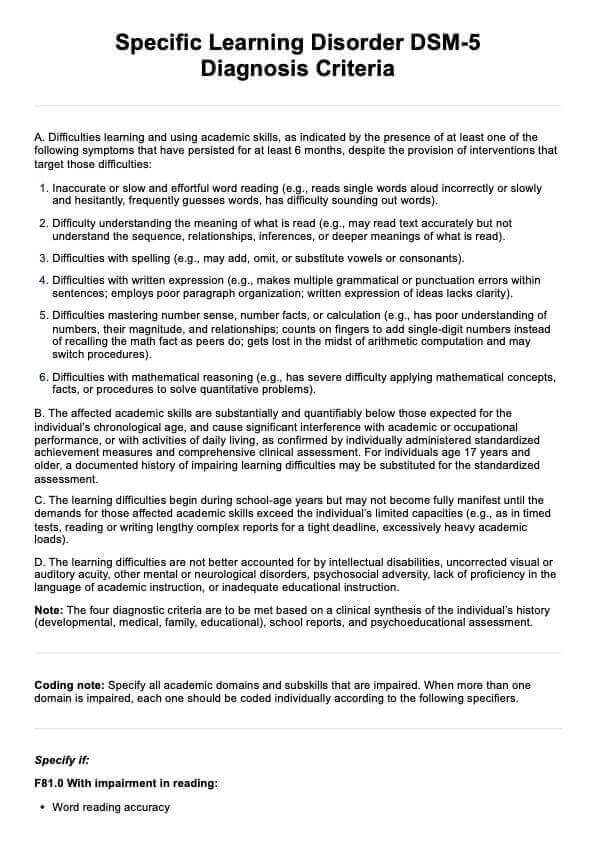Learning difficulties affect specific academic skills, whereas intellectual disability impacts overall cognitive functioning and adaptive behaviors. Individuals with SLD typically have average or above-average intelligence but struggle in specific academic areas.

Specific Learning Disorder DSM 5 Criteria
Access a comprehensive guide to identifying, diagnosing, and managing learning difficulties with our Specific Learning Disorder DSM-5 Criteria.
Specific Learning Disorder DSM 5 Criteria Template
Commonly asked questions
Yes, SLD can co-occur with other neurodevelopmental disorders, such as attention deficit hyperactivity disorder (ADHD) and autism spectrum disorder (ASD), leading to additional challenges in academic and social settings.
Parents and educators play a critical role in identifying early signs of SLD, advocating for appropriate assessments, and ensuring children receive tailored interventions and accommodations to support their academic learning needs.
EHR and practice management software
Get started for free
*No credit card required
Free
$0/usd
Unlimited clients
Telehealth
1GB of storage
Client portal text
Automated billing and online payments











